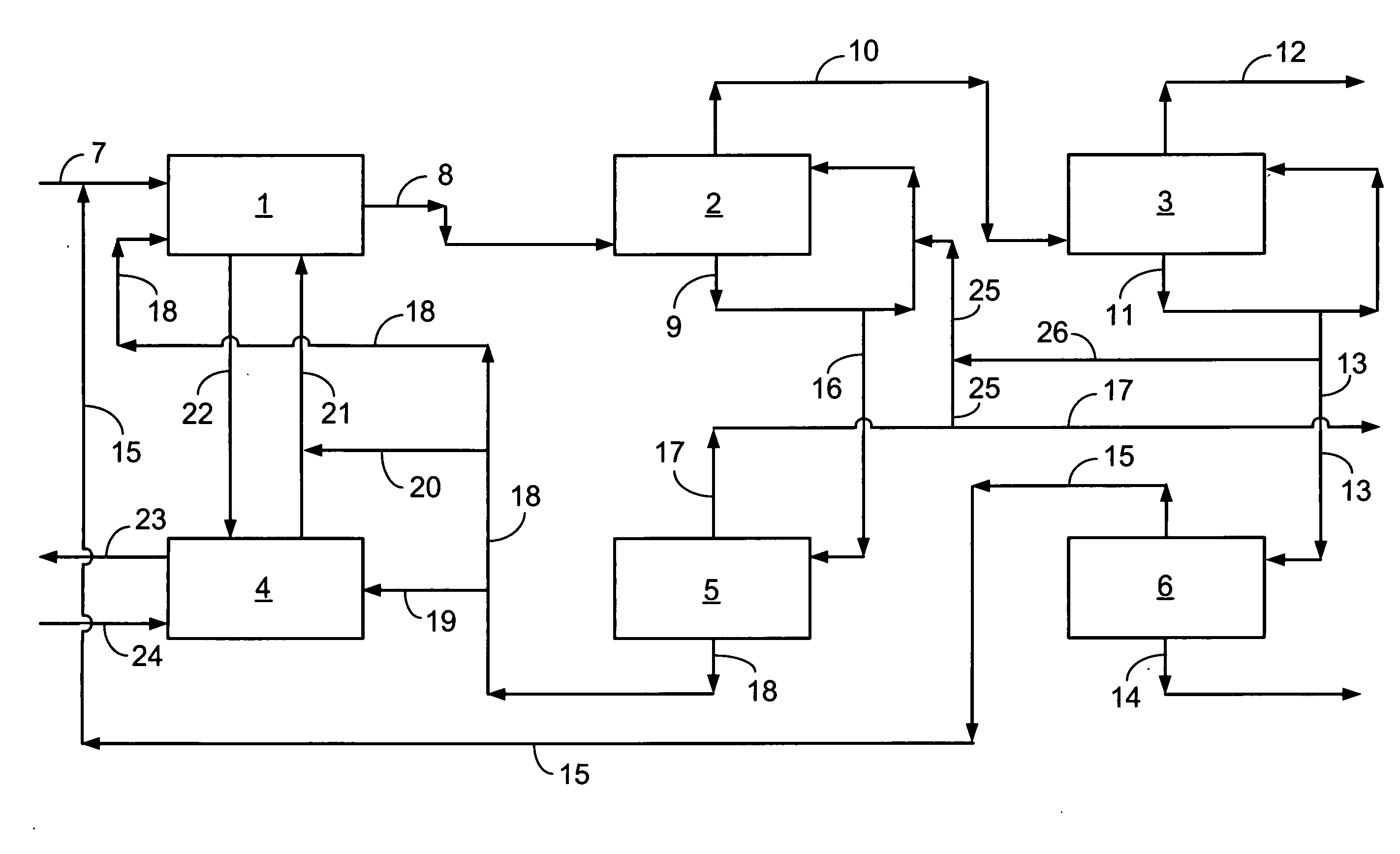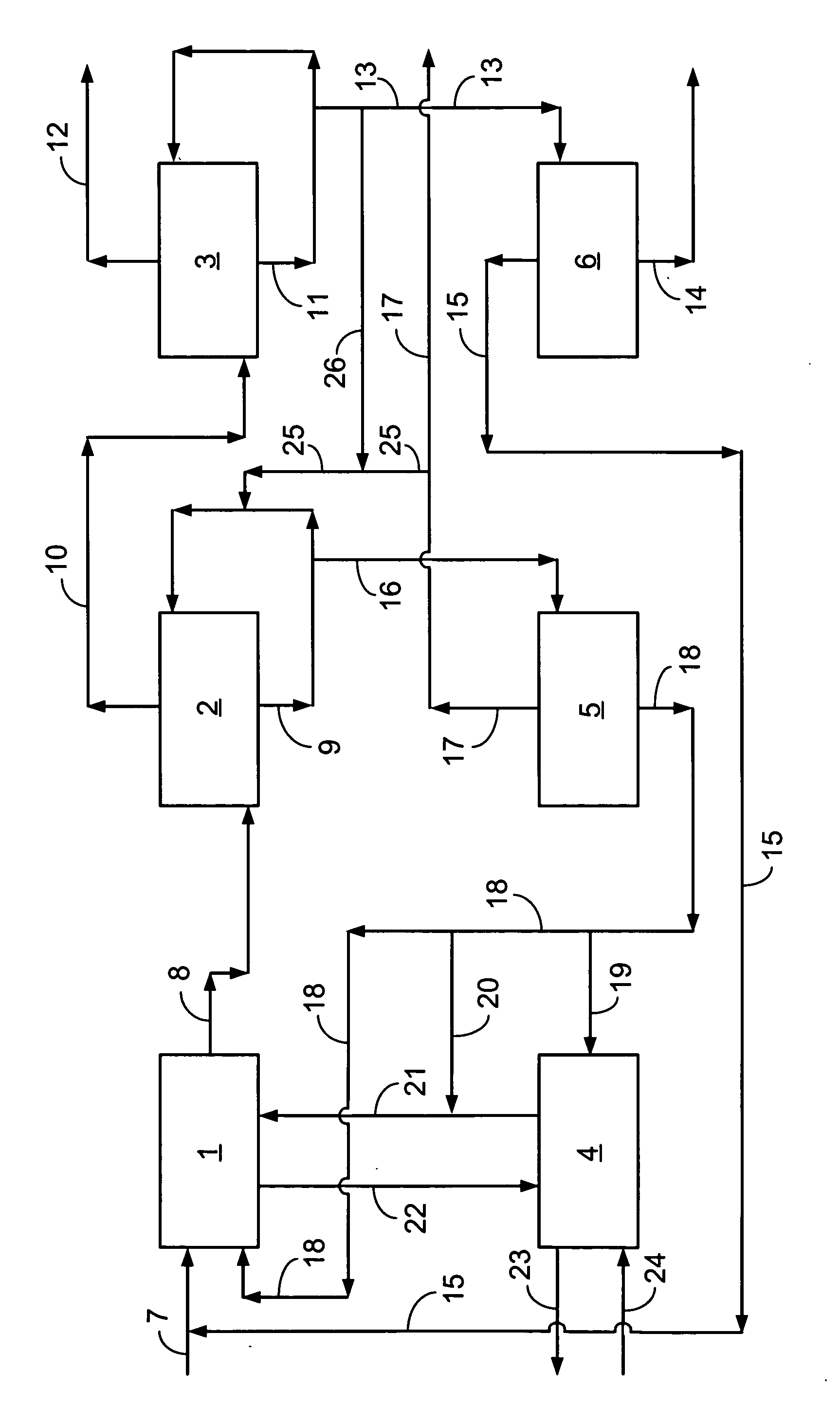Wet scrubbing and recycle of effluent-contaminating catalyst particles in an oxygenate-to-olefin process
a technology of oxygenate-to-olefin and catalyst particles, which is applied in the direction of hydrocarbon preparation catalysts, hydrocarbon oil treatment products, organic chemistry, etc., can solve the problems of substantial additional loss of dme that was not considered in germany, additional loss, and substantial problem, so as to achieve real and technically feasible effect and improve the economics of an oto process
- Summary
- Abstract
- Description
- Claims
- Application Information
AI Technical Summary
Benefits of technology
Problems solved by technology
Method used
Image
Examples
example 1
[0044] In order to demonstrate the protective effect of coke content on the activity-stability characteristics of an MTO catalyst-containing SAPO-34 when it is immersed in an aqueous scrubbing solution in accordance with the wet scrubbing step of the present invention, an experiment was conducted in which a sample of a typical non-zeolitic MTO catalyst was subjected to an aqueous immersion step with and without the protective benefit of a layer of coke deposits. In addition, a second control catalyst was tested in order to benchmark the activity-stability performance of a coke-free catalyst that had not been subjected to an aqueous immersion step.
[0045] The composition of the typical non-zeolitic MTO catalyst was 40 mass-% SAPO-34, 40-mass-%, kaolin clay and 20 wt-% silica-alumina binder. The SAPO-34 material was synthesized in accordance with the methodology specified in U.S. Pat. No. 5,191,141. This catalyst in a coke-free form had a piece density of 1.075 g / cc and an average par...
example 2
[0052] In order to study the effect of thermal shock on a wet scrubbing MTO catalyst that had been withdrawn from an aqueous immersion step, an experiment was conducted wherein two 50 gram portions of Catalyst A were exposed to an aqueous immersion step conducted at a temperature of 40° C. for a period of 48 hours as explained above. The resulting wet scrubbing catalyst in the case of run 6 was subjected to a thermal shock step which essentially involved quickly placing the wet scrubbing catalyst that was withdrawn from the immersion step in a box oven that was maintained at 650° C. and an ambient pressure at a period of 5 minutes. These conditions were chosen to simulate a worst case scenario when the catalyst that was withdrawn from the wet scrubbing step is immediately exposed to a high temperature condition in the MTO conversion step or the regeneration step of the present invention. The temperature differential was set at a level of 610° C. in order to accomplish this objective...
PUM
| Property | Measurement | Unit |
|---|---|---|
| temperature | aaaaa | aaaaa |
| temperature | aaaaa | aaaaa |
| pressures | aaaaa | aaaaa |
Abstract
Description
Claims
Application Information
 Login to View More
Login to View More - R&D
- Intellectual Property
- Life Sciences
- Materials
- Tech Scout
- Unparalleled Data Quality
- Higher Quality Content
- 60% Fewer Hallucinations
Browse by: Latest US Patents, China's latest patents, Technical Efficacy Thesaurus, Application Domain, Technology Topic, Popular Technical Reports.
© 2025 PatSnap. All rights reserved.Legal|Privacy policy|Modern Slavery Act Transparency Statement|Sitemap|About US| Contact US: help@patsnap.com


